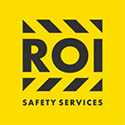
We GUARANTEE we will match anyone’s price and beat it by 10%!
We GUARANTEE we will match anyone’s price and beat it by 10%!


According to the Occupational Safety and Health Administration (OSHA), all employees who work in or around confined spaces must be properly trained to safely work in these environments. This may include training on recognizing and identifying confined spaces, understanding the hazards associated with confined spaces, and knowing how to have a confined space entry and exit after the confined space entry. The confined space program is extremely imperative.
The purpose of this confined space entry training is to ensure that employees are aware of the potential hazards associated with confined spaces and know how to safely work in these environments. OSHA requires that all employers use the confined space program to provide this confined space entry training to their employees who may be exposed to confined spaces. In this article we will be looking at confined space training requirements and other confined space training topics.
Confined spaces are areas that are not designed for human occupancy and that have limited or restricted means of entry or exit. Confined spaces can be dangerous because they may contain harmful gasses, vapors, or dust, as well as hazardous equipment. That’s why a confined space entry permit is important.
Working in a confined space can also be dangerous for an authorized entrant because there is a risk of being trapped or asphyxiated if the space is not properly ventilated. This will require a confined space rescue in the permit space.
Another hazard associated with confined spaces is the risk of explosion. This is a particular concern in confined spaces that contain flammable liquids or gasses.
Because of the potential hazards associated with confined spaces, employees who work in or around these areas must be properly trained in how to safely work in these environments, as well as having an entry supervisor. in the permit space.
NIOSH data shows that 50% of employee deaths occur when they are attempting to rescue another worker.
To prevent these types of accidents and confined space hazards, OSHA requires that all employees/entrants who may be exposed to confined spaces receive training on the hazards associated with these environments in order to have permit space entry.
This training must be provided before an employee enters a confined space and must be repeated at regular intervals.
The training must cover the following topics:
Recognizing and identifying confined spaces: Employees/entrants must be able to identify confined spaces and understand the hazards associated with these environments.
Understanding the hazards associated with confined spaces: Employees must be aware of the potential risks of working in a confined space, including being exposed to harmful gasses, vapors, or dust, as well as the risk of being trapped or asphyxiated. Fire safety and electrical safety is imperative!
Knowing how to safely enter and exit a confined space: Employees must be trained on the proper procedures for safely entering and exiting a confined space.
Wearing the proper safety equipment: Employees must be aware of the need to wear the proper safety equipment when working in a confined space incase of a potential hazard. This may include respiratory protection, as well as protective clothing. Workplace safety is extremely important
Proper Lockout/Tagout procedures: Employees must be trained on the proper procedures for locking out and tagging out equipment that may pose a hazard in a confined space.
Following proper procedures for ventilating a confined space: Employees must be trained on the proper procedures for ventilating a confined space. This may include using fans or other ventilation equipment to ensure that the space is adequately ventilated.
Monitoring the air quality in a confined space: Employees must be trained on how to monitor the air quality in a confined space. This may include using a gas detector or other monitoring equipment to ensure that the air quality is safe.
Rescue and emergency procedures: Employees must be trained on the proper procedures for rescue operations and emergencies. This may include knowing how to use self-contained breathing apparatus as a rescue procedure.
Fall protection: Employees must be aware of the need to use fall protection when working in a confined space. This may include using a harness or other personal protective equipment.
In addition, employers must provide employees with a written copy of the confined space procedures. These procedures must be followed when working in or around a confined space.
The procedures must include the following information:
– The location of all confined spaces on the premises
– The hazards that are present in each confined space
– The proper procedures for safely entering and exiting a confined space
– The procedures for ventilating a confined space
– The procedures for monitoring the air quality in a confined space
– The emergency procedures that should be followed in the event of an accident or injury
By following these procedures, employers can help to ensure the safety of their employees who work in confined spaces.
There are three main types of confined spaces: permit-required, non-permit required, and atmospheric. Permit-required confined spaces are those that have one or more of the following hazards:
Non-permit-required confined spaces are those that do not have any of the above hazards. Atmospheric confined spaces are those that have the potential for an atmospheric hazard but do not have any other type of hazard.
All employees who work in or around confined spaces must be properly trained to safely work in these environments. This may include training on recognizing and identifying confined spaces, understanding the hazards associated with confined spaces, and knowing how to safely enter and exit a confined space.
If you experience any symptoms of exposure to a hazard while working in a confined space, you should immediately follow these steps:
1) Leave the confined space: If you begin to experience any symptoms of exposure, you should leave the confined space immediately. Do not attempt to continue working in space.
2) Go to a safe area: Once you have left the confined space, go to a safe area that is away from the hazard.
3) Call for help: If you are experiencing any symptoms of exposure, call for help from a co-worker or supervisor.
4) Seek medical attention: If you are experiencing any symptoms of exposure, seek medical attention as soon as possible.
5) Report the incident: After you have sought medical attention, you should report the incident to your supervisor.
By following these steps, you can help to ensure your safety and the safety of others who may be working in a confined space.
Employees can be properly trained in confined spaces by receiving comprehensive training that covers all of the hazards associated with these environments. The training should be tailored to the employee’s level of experience and should be repeated regularly. Here at ROI Safety Services, we offer a detailed training program that covers all aspects of confined space safety. Our program is designed to help employees learn how to safely work in these environments and can be customized to meet your specific needs.
When selecting a confined space safety training program, there are a few things you should look for:
Organized and well-structured program: The program should be organized and well-structured so that employees can easily follow along and understand the material.
Customizable: The program should be customizable to meet the specific needs of your organization.
Interactive: The program should be interactive so that employees can actively participate in the learning process.
The program covers all aspects of confined space safety: The program should cover all aspects of confined space safety, from recognizing and identifying confined spaces to understanding the hazards associated with these environments.
Trainers are knowledgeable and experienced: The trainers should be knowledgeable and experienced in confined space safety so that they can effectively train employees.
Program is tailored to your needs: The program should be tailored to your specific needs so that it is relevant to your employees and your workplace.
There are a few things you can do to prepare for confined space training:
1) Review the material: Make sure you review the material so that you are familiar with the concepts covered in the training program.
2) Ask questions: If you have any questions, ask your trainer. This is an opportunity to get clarification on any points that you do not understand.
3) Practice: If possible, practice the procedures that you will be learning in the training program. This will help you to better understand how to safely work in a confined space.
4) Be prepared to participate: Be prepared to actively participate in the training program. This will help you to get the most out of the training.
By following these tips, you can help to ensure that you are prepared for confined space training.
Here at ROI Safety Services, we offer a comprehensive confined space safety training program that covers all aspects of confined space safety. Our program is designed to help employees learn how to safely work in these environments and can be customized to meet your specific needs. Our program includes training topics on:
Our program is designed to be interactive and engaging so that employees can actively participate in the learning process. Our trainers are knowledgeable and experienced in confined space safety, and they will work with you to tailor the program
Confined space training is essential for employees who work in or around confined spaces. The training should cover all aspects of confined space safety, from recognizing and identifying confined spaces to understanding the hazards associated with these environments. Employees should be trained regularly so that they stay up-to-date on the latest safety procedures. Here at ROI Safety Services, we offer comprehensive confined space training that covers everything your employees need to know to stay safe while working in these environments.
